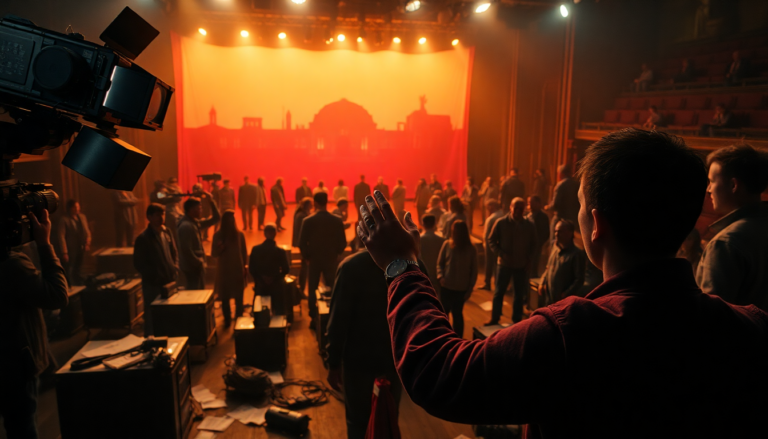Argomenti trattati
The Struggles of Bringing Stranger Things to the Stage
Behind the Curtain, a Netflix documentary, chronicles the arduous journey of creating Stranger Things: The First Shadow. This play, set in the world of the beloved TV series, attempts to explore the teenage years of Henry Creel, who evolves into the notorious Vecna. However, the documentary reveals a disheartening truth about the production: it often feels like a futile exercise in commercialism rather than a genuine artistic endeavor.
A Commercialized Experience
While great art can emerge from commercial projects, The First Shadow struggles to break free from its promotional roots. Instead of offering a fresh perspective on the characters we love, it serves as a lengthy advertisement for the final season of Stranger Things. With a runtime of nearly three hours and ticket prices soaring above $300, the experience becomes tedious and overpriced.
The narrative attempts to provide a glimpse into the lives of characters like Joyce Byers and Jim Hopper, but it often feels constrained by the need to keep key details hidden from casual fans. This leads to a production that prioritizes spectacle over substance, leaving die-hard fans feeling shortchanged.
The Documentary’s Insight into Creative Challenges
As the production in London prepares for its opening night, Behind the Curtain offers a behind-the-scenes look at the chaos. Cinematographer Geraint Thomas transitions from being a trusted ally to an unwelcome observer, highlighting the tension within the creative team. Playwright Kate Trefry, a newcomer to theater writing, grapples with the weight of expectations as she navigates the pressures from the Duffer Brothers, the creators of the series.
During a production meeting, Trefry reveals that changes to the final season will affect the play’s storyline, leading to a loss of critical character arcs. This moment encapsulates the challenges faced by the cast and crew as they work to balance the demands of the source material with the need for original storytelling.
Hints of a Disappointing Production
Despite the hurdles, a few moments in Behind the Curtain suggest the potential for a more cohesive narrative. Trefry’s initial struggles to articulate the play’s storyline point to a lack of clarity in its direction. As she mentions the need to cut significant portions of text, viewers are left wondering what essential elements might have been sacrificed in the process.
One bright spot in the production is Gabrielle Nevaeh’s portrayal of Patty, Bob’s younger sister. Her character adds a touch of depth and relatability often missing in the overall spectacle. However, her performance is overshadowed by the overwhelming focus on flashy effects rather than character development.
Theatrical Elements vs. Digital Distractions
While The First Shadow boasts impressive visual effects, the reliance on technology often detracts from the raw power of live theater. Digital projections and screens dominate the stage, leaving little room for the kind of immersive storytelling that theater fans crave. In contrast, the earlier seasons of Stranger Things found success in blending the mundane with the extraordinary, a balance that this production fails to achieve.
As the narrative unfolds, the characters’ interactions lack the authenticity that made the original series compelling. Instead of engaging in meaningful dialogue, they often feel like they are part of a rehearsed performance, reminiscent of a musical rather than a gripping narrative. The essence of Stranger Things—the blend of small-town life and supernatural elements—is notably absent, leaving audiences longing for the charm that first drew them in.
Final Thoughts on a Missed Opportunity
Ultimately, Stranger Things: The First Shadow highlights the pitfalls of adapting a beloved franchise for the stage without fully understanding its essence. While the production may have garnered praise in certain circles, the disconnect between the creative team and the source material is palpable. As Stephen Daldry aptly stated, when theater excels, it can be exhilarating; however, when it falters, the disappointment is profound.
The curtain may have fallen on The First Shadow, but its legacy serves as a reminder of the challenges that come with translating beloved stories into new formats. As fans, we can only hope that future adaptations will learn from these missteps to deliver the captivating experiences we crave.

